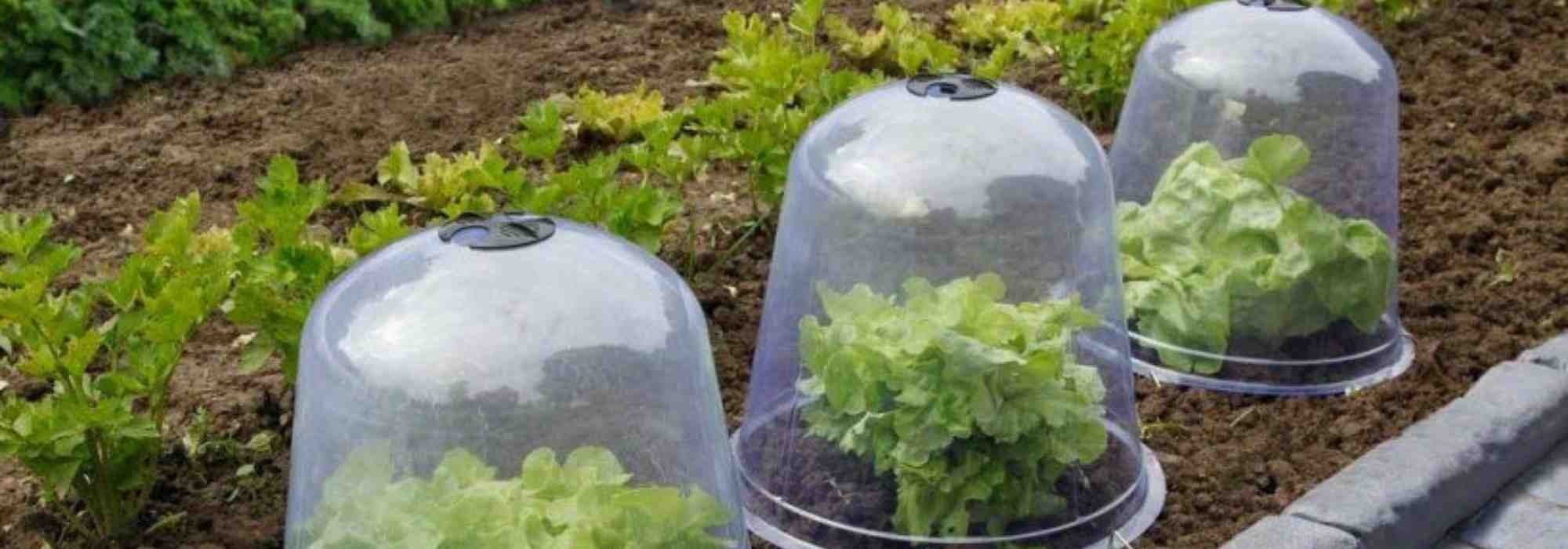
Forcing cloches or protective cloches: what are they used for?
Many benefits...
Summary
Garden cloche, protective cloche or forcing cloche… names vary for an object that is ultimately very simple. It is a transparent cloche that keeps young plants or sowings in relative warmth and humidity. This creates a confined space useful for plants so they can grow under optimal conditions when outside conditions do not permit: frost, heavy rain, pests… But which type of cloche should you choose, when should you place them in the garden and why? Find out quickly the uses of forcing cloches, their advantages and disadvantages.
Forcing cloche or protective cloche?
Mini cloches, called “forcing cloche” or “protective cloche”, are used, as their names suggest, either to protect crops or to “force” them, that is, to artificially accelerate a plant’s growth and production. Uses are therefore as follows :
- Protection of plants most sensitive to cold : these mini cloches retain a little warmth and humidity inside ;
- Forcing plants : on one hand for early sowing, cloches allow faster emergence and protection against frost ; and on the other hand after transplanting a young plant to help it get through cold nights and to “force” it to grow more quickly. All this allows earlier harvests in the vegetable garden ;
- Propagation by cuttings in a closed environment : a cutting kept in a closed environment is done under a cloche to retain humidity and a little warmth. It is therefore easy to propagate directly in ground and add a forcing cloche so that the cutting establishes easily ;
- Protection against certain pests : think first of slugs and snails eager for young tender shoots. But protective cloches can also prevent some insects from laying eggs on your plants, avoiding larvae running riot in your vegetable garden ;
- Protection against other external “attacks” : cloches can also protect a particularly fragile plant from adverse weather such as heavy rain, a snow shower or cold, drying wind.
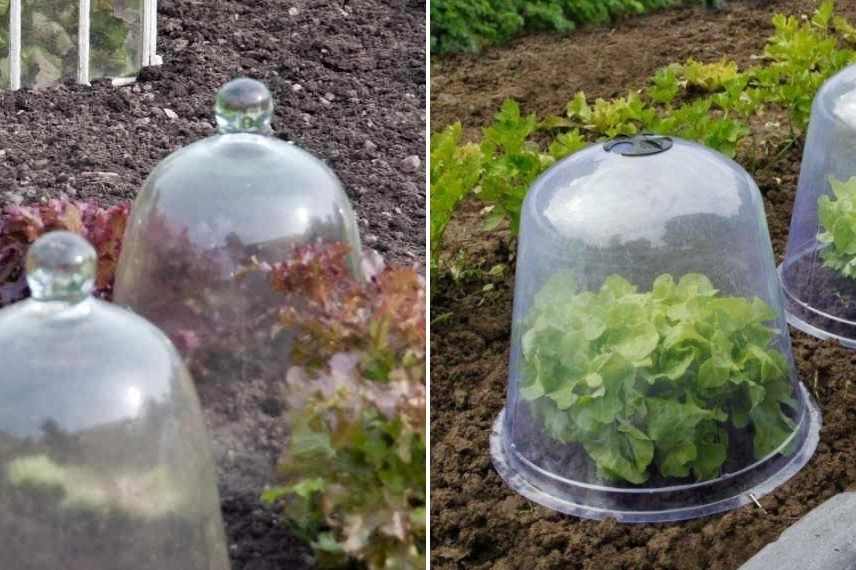
How to use forcing cloches or protective cloches?
Using cloches couldn’t be simpler; just keep one thing in mind: put a cloche in place when circumstances require.
- Place cloches in cold weather: especially if frost is possible during the night or part of the day and only on plants likely to suffer from cold ;
- Remove cloches if weather warms up, especially if sun “beats” down on the cloche: a cloche is a mini-greenhouse; if you leave it in full sun (even in winter), the plant may literally be scorched ;
- Cloches must not be completely airtight : if no ventilation is possible, there is a high risk of development of fungal diseases due to excess humidity. Some rare old glass cloches were fitted with vents but most do not; simply raise the cloche slightly on a small stone or branch. Plastic cloches, by contrast, are usually fitted with vents that you can open at least once a day. If this is not the case, avoid this type of equipment… ;
- Do not leave cloches ad vitam æternam : if the plant is sufficiently developed, especially if it fills the entire volume of the cloche, and if any risk of frost has been definitively ruled out, you should remove the cloche.
Discover other Growing cloches and tunnels
View All →Available in 1 sizes
Available in 1 sizes
Available in 1 sizes
Available in 1 sizes
Available in 1 sizes
Glass cloche or plastic cloche: which one to choose?
- Glass cloches: beautiful and vintage, glass cloches always add a touch of character to your garden. Glass cloches are more durable in the long term. Glass being an inert material, it will not deteriorate over time unlike plastic, which will only last a few years. The drawback of glass cloches is that they are quite fragile to impact and rather heavy, so take care when handling them. One minor downside is that the vast majority lack any ventilation system (see above). Finally, and not least, glass cloches are very expensive and quite hard to find. So if you have some, keep them at all costs! Otherwise you’ll have to hunt for cloches during visits to car boot sales and flea markets (note that some firms are reproducing garden glass cloches again);
- Plastic cloche: less attractive in appearance than glass ones, they are by no means without merits. They are cheaper to buy, much lighter (be sure to secure them to the ground), less prone to breaking and always fitted with ventilation systems. Plastic cloches are a good choice for the vegetable garden. Some may regret use of a petroleum-based material, but that can be offset by the fact that cloches are reused for several years (less time than glass cloches which, if looked after, can span generations…).
→ Find our finest cloches on our online shop.
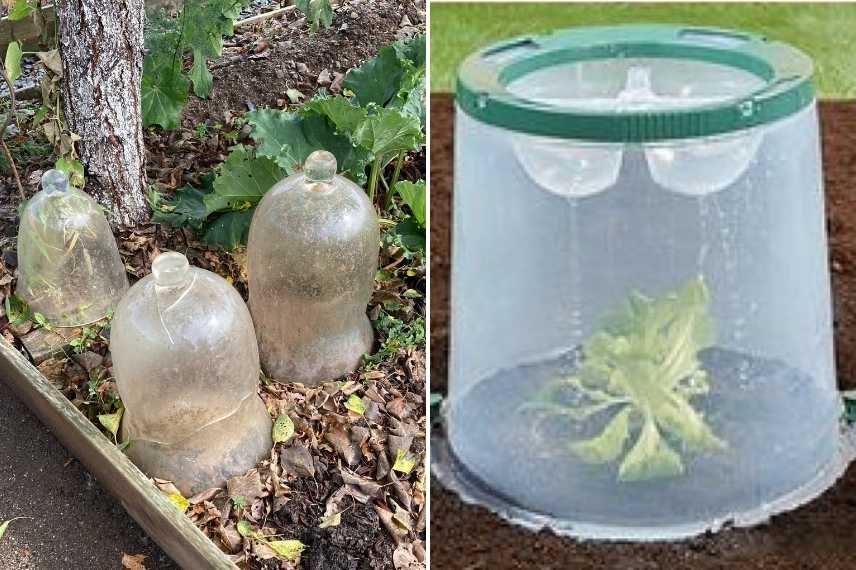
Oli’s tip: time for upcycling! You can easily make forcing cloches from water jugs or large 5 L bottles cut across. It’s a bit unsightly, it’s true, but just as effective as ‘real’ cloches. The cap then serves as ventilation. To secure them, and avoid finding your bottles in a neighbour’s garden at the slightest gust of wind, simply pass a bamboo cane or similar through the neck and push it into the soil.
- Subscribe!
- Contents































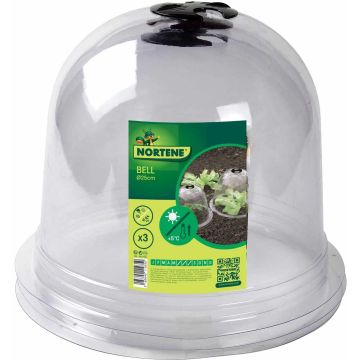
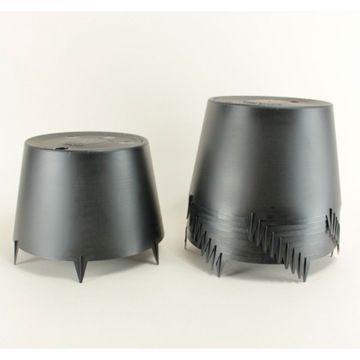
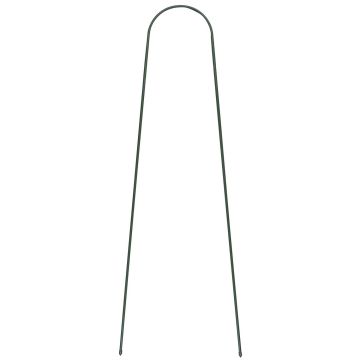
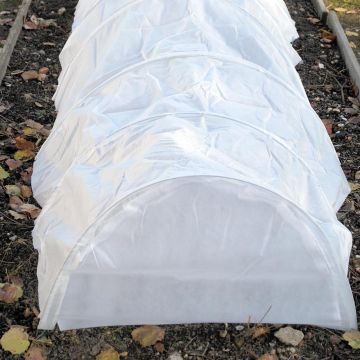
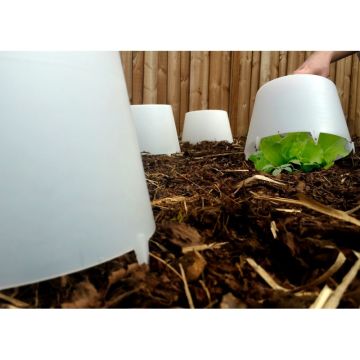
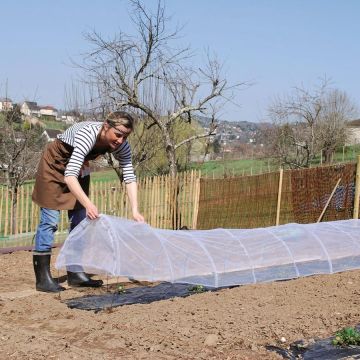
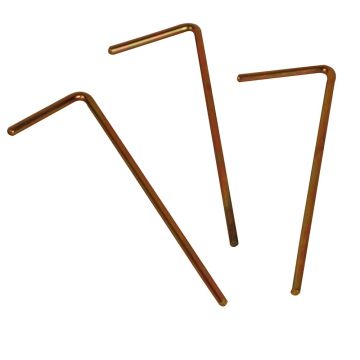
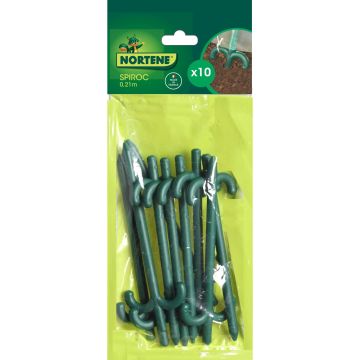
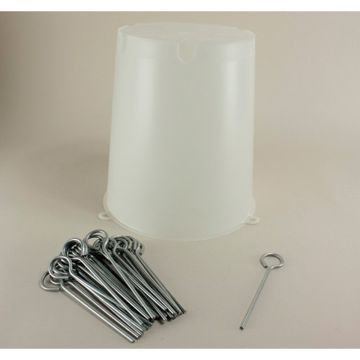
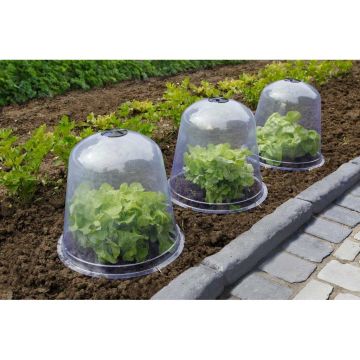
Feedbacks